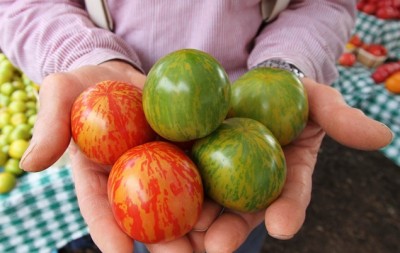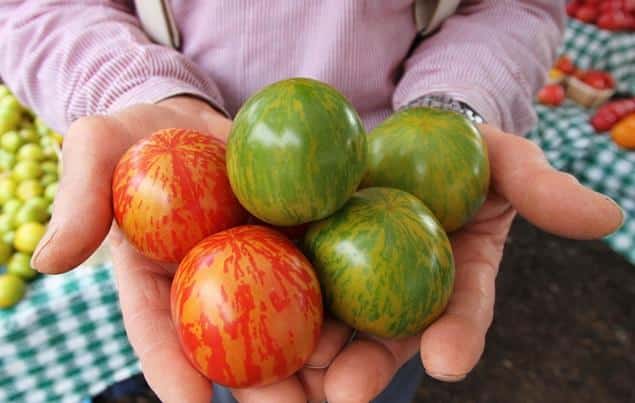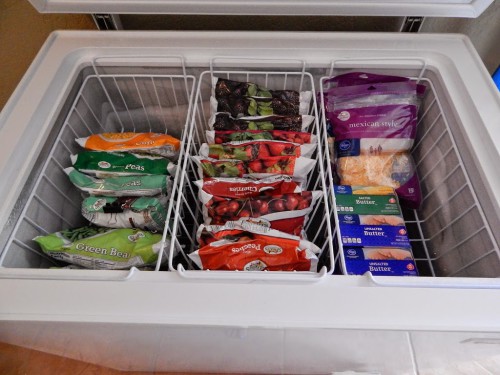
There are so many different seeds available today, but with the introduction of genetically modified organisms (GMO), it can be hard to tell what you’re really getting. GMO plants and crops are genetically engineered to introduce a trait in the plant that isn’t found naturally, such as making the plant resistance to diseases and pests, early blooming, or even giving them the ability to produce a pharmaceutical drug.
While more research needs to be done, the health effects GMO foods have on humans is still debatable. Some scientists and studies report that no adverse health effects occur from eating GMO foods. However, other studies have found that rats fed a GMO diet had increased incidence of cancers, as well as liver, kidney and heart damage. In addition, GMO crops have been linked with ecological damage, such as the recent drop in bee populations.
Again, more research must be done before anything becomes conclusive, but why take the risk in using GMO seeds? If someday food turns out to be harmful to our health or unsustainable as crops, at least you can say you never bought into the hype. Let’s check out the types of non-GMO seeds and how you can build up a stockpile by growing your own non-GMO plants.
Non-GMO and Heirloom Seeds
When buying seeds at a nursery or garden center, look for a seal that says the seeds are non-GMO. While it’s not required to label a product as being GMO, many seed manufacturers want their customers to know. Some sellers have reported that they’re selling more non-GMO seeds because customers are leery about the effects and sustainability of modified seeds.
Order your 2014 Heirloom Solutions seed catalog and get $10 in your account!
Heirloom varieties of fruits and vegetables have a long history and are considered to be “original and purebred,” meaning they haven’t been bred or mixed with any other variety (that would make it a hybrid). There are hundreds of varieties of heirloom plants, some more rare than others, and some that have been around for over one hundred years. Again, look for a non-GMO label on these seed packets.
Types of Heirloom Seeds
Heirloom seeds store better and produce the same crop year after year, unlike hybrid varieties. Looks for these seeds when getting prepared for the growing season or for stockpiling your supply:
- Blue Lake Bush Bean or Cherokee Wax Bean
- California Wonder Bell Pepper
- Marketmore Cucumber
- Scarlet Nantes Carrot
- Parris Island Cos Romaine Lettuce
- Lincoln Shell Sweet Pea
- Brandywine or Beefsteak Tomato
- Green Sprouting Broccoli
- Yellow Sweet Spanish Onion
- Stowell’s Evergreen Sweet Corn
- Crimson Sweet Watermelon
Of course there are way more than just those varieties, but those are some of the most common ones.
Saving “Dry” Heirloom and Non-GMO Seeds
Many seeds are fairly easy to save and require little work other than scooping out the seeds, rinsing them off, drying, and storing in a cool, dry place. Sometimes, you must allow the produce to dry out on the vine. These two methods work for seeds that aren’t housed in wet, goopy areas, like pepper, corn, zucchini (could go either way), and bean seeds. Anytime you’re saving seeds, always choose a strong fruit or vegetable that is well-shaped, has good color, and is free of any defects. This will ensure you’re only passing on those good genes!
Story continues below video
With peppers and zucchini, simply scoop out the seeds, put in a strainer and rinse, and then lay them out individually with a paper towel over them. After 3-5 days, they should be dry. Ensure they are completely dry by checking to see if they stick to surfaces or other seeds. Once they are dry, store in an envelope or Ziploc bag in a cool, dark place. Don’t store seeds that aren’t completely dry! As a side note – some gardeners have found that letting a zucchini dry out for a month or so helps in the seed-saving process.
With corn and beans, wait until the end of harvesting season and allow them to dry out on the vine. For beans, once they are dry enough, you should be able to shake them and hear the seeds rattle inside. This is an indication the seeds are ready to be saved. Remove the bean seeds and lay them out individually and allow them to air dry for a few days. After this, they’re ready for storage.
Wait until a few weeks before the first frost to remove the ears of corn you’ve kept on the stalk. Once removed, hang them upside down in a cool, dry place for a month or longer. At this point, the corn kernels should be very dry and ready for storage.
Saving “Wet” Seeds
If you had a great crop of heirloom or non-GMO plants whose seeds are contained in a wet, fibrous interior and you want to pass on their legacy to the next generation or start a stockpile, you’ll be glad to know that savings these seeds isn’t rocket science — it’s fermentation! Sure, it’s a little harder than just pulling out the seeds and putting them in a bag, but the process isn’t hard.
Choose a very good-looking fruit or vegetable from one of your best plants and cut it across the center. With a spoon, scoop out the seeds and the “gooey” part and place into a cup or container. Add a little water so that the seeds float and cover the lid with a paper towel or plastic wrap.
Set the container in a warm location for 2-4 days. You may want to place it somewhere you don’t go often – it’s probably going to smell! You’ll know fermentation is done when the seeds settle to the bottom of the container and a layer of reddish mold grows on top.
Remove the mold and pour the rest of the container into a strainer. Wash the seeds off and lay individually on a towel and let them dry for 5 days or longer. You’ll know the seeds are dry when they don’t stick together.
Finally, place your seeds in a small bag or envelope and you’re done!
Some gardeners have found that you only have to do the fermentation with tomatoes, completely skipping this method with melons and cucumbers. Experiment a little and check your results when growing season starts.
Sign up for Off The Grid News’ weekly email and stay informed about the issues important to you










